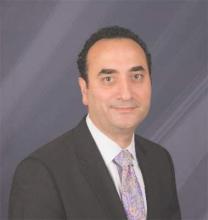Hospitalists should drive post-discharge care selection
FROM HOSPITAL MEDICINE 2016
Medicare’s five star-rating system for nursing homes can inform those choices, said Dr. George Mitri, chief medical officer for U.S. Acute Care Solutions and former vice president of care coordination and hospital medicine for Aultman Hospital in Canton, Ohio.
Across the country, he said, 40% of the 1.4 million patients who are in nursing homes are in facilities with only one or two stars. “That’s 560,000 patients who are in nursing homes that are providing poor quality, and we don’t know it.”
Those nursing homes are more likely to cost more money through readmissions and other problems affecting the bundled payment, Dr. Mitri said. And, he said, “if you’re a one-star, you’re actually causing harm to the patient.”
As hospitalists look to gauge quality of post-discharge care, Dr. Mitri said they should also look at quality ratings for home health agencies and rehabilitation facilities, where there also is wide variation.
Another way that hospitalists can reduce spending and maximize bundled savings is by paying more attention to documentation and coding through data, Dr. Mitri said.
That means, for example, making sure that a stroke case in diagnosis-related group 64 is not incorrectly coded as a lower-paying 65. “If you have 64s (being coded as) 65s, you’re going to lose money, because you’re using more resources than was intended. If data is king, documentation is queen,” he said.
Using Medicare’s bundled payment model for stroke, Dr. Mitri said, his former hospital “narrowed its network” and was able to “cut down the cost because we cut down length of stay and have better expectations from nursing facilities about what they’re going to do with our patients.”







